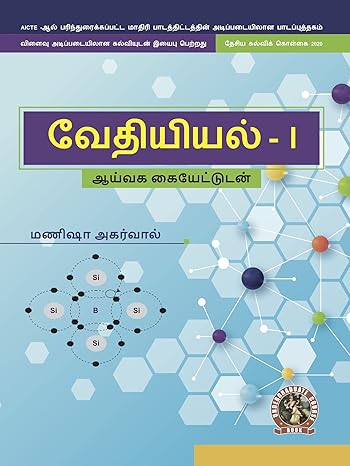Chemistry I (with Lab Manual) (Telugu)
Dr. Manisha Agarwal is Dean, Basic Sciences at Chhattisgarh Swami Vivekanand Technical University Bhilai. Professor and head, Department of Chemistry at Rungta College of Engineering & Technology, Bhilai, (C.G.). She completed Ph. D. from Pt. Ravishankar Shukla University, Raipur in 1999. Since then she has been engaged in teaching and research. Dr. Manisha has authored several papers which have been published in SCI indexed International and National journals. She has organised more than 10 Conferences and workshops as convener among them four were International Conferences. She has credited five books as author, three patents as inventor and applicant and six Research Project Grants as Principal Investigator from Government Funding agencies like AICTE, CCOST and CSVTU. She has supervised 5 M. Phil. Students, 12 BE and Diploma students. Presently 6 research scholars are perusing Ph. D. under her supervision. ... Read more Read less
“Chemistry-l” is a compulsory paper for the first year Undergraduate course in Engineering & Technology. Syllabus of this book is strictly aligned as per model curriculum of AICTE, and academic content is amalgamated with the concept of outcome based education.
Book covers seven topics- Atomic and molecular structure, Spectroscopic Technique and applications, Inter-molecular Forces and Potential Energy Surfaces, Use of Free Energy in Chemical Equilibrium, Periodic Properties, Stereo-chemistry, Organic Reactions and Synthesis of Drug Molecules. Each topic is written is easy and lucid manner. Every chapter contains a set of exercise at the end of each unit to test student’s comprehension.
Salient Features:
Content of the book aligned with the mapping of Course Outcomes, Programs Outcomes and Unit Outcomes.
Book Provides lots of recent information, interesting facts, QR Code for E-resources, QR Code for us of ICT, Projects group discussion etc.
Students and teacher centric subject materials included in book with balanced and chronological manner.
Figures, tables, chemical equations and comparative charts are inserted to improve clarity of the topics.
Short questions, objective questions and long answer exercises are given for practice of students after every chapter.
Solved and unsolved problems including numerical examples are solved with systematic steps.
... Read more Read less










